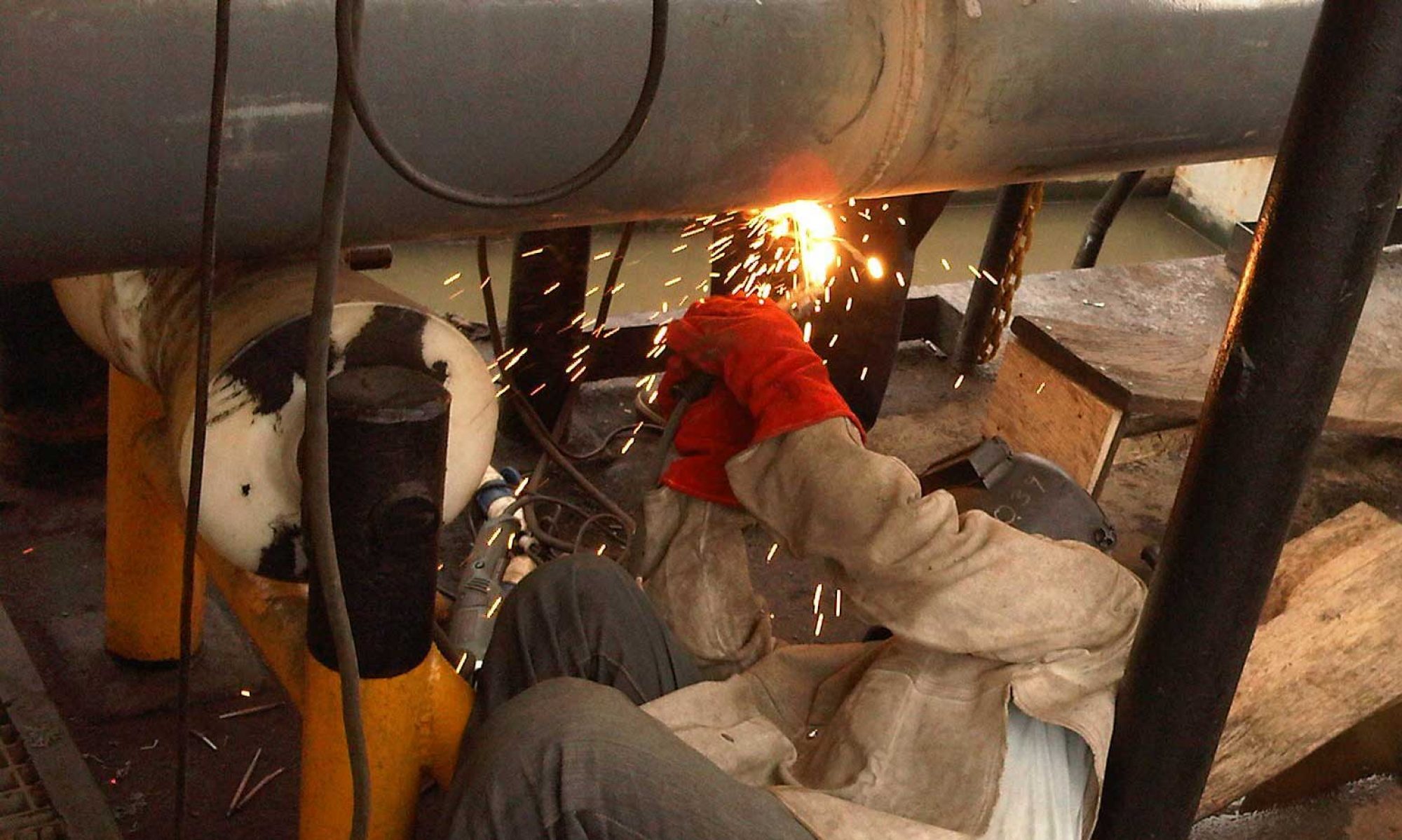Design engineers frequently specify stainless steel in industrial piping systems and tanks for its excellent corrosion resistance. While stainless steel’s unique characteristics make it a standout leader in the durability stakes of alloys, it is not completely immune to corrosion. Premature failures of the stainless steel can occur due to Microbiologically Influenced Corrosion (MIC). This corrosion phenomenon usually occurs when raw water used for hydrostatic pressure tests is not fully removed from the pipework and there is an extended period before commissioning of the equipment. The result is localised pitting corrosion attack from microbacterial deposits that, in severe cases, can cause failure within a few weeks. MIC is easily prevented using proper hydrostatic testing techniques
MIC
MIC failures occur by pitting corrosion, often at welds, where colonies of bacteria may form. A number of different bacterial species are known to cause the problem, but the detailed mechanism is not known. Iron utilising bacteria appear to be the dominating microbial species involved with MIC occurring in stainless steel. Anaerobic sulphate-reducing bacteria pose a greater risk of instigating or accelerating corrosion often under a layer of aerobic slime or microbial deposits. However others, such as manganese utilising bacteria (generally from underground waters), have also been discovered. MIC is extremely aggressive and difficult to eliminate once established, so it is surprising and disappointing that there is limited knowledge of MIC within the engineering community. Fortunately, MIC is easily avoided by using good practices during the initial hydrostatic testing. Education and promotion of proven hydrostatic testing practices which prevent MIC are vital to minimising its potential impact on the stainless steel industry
